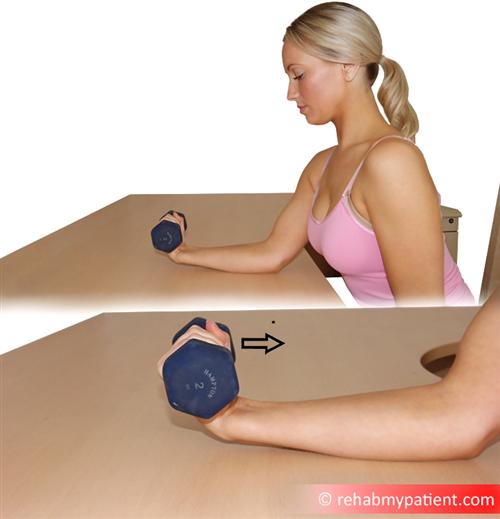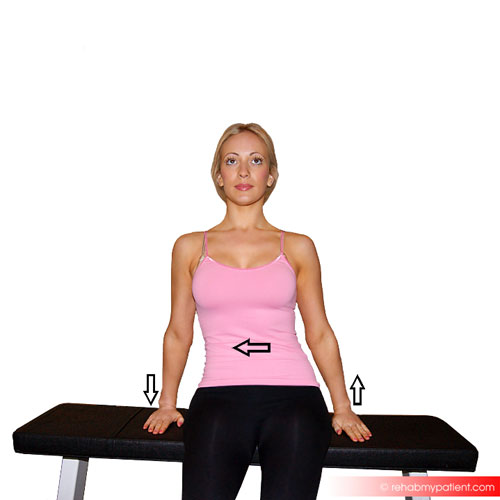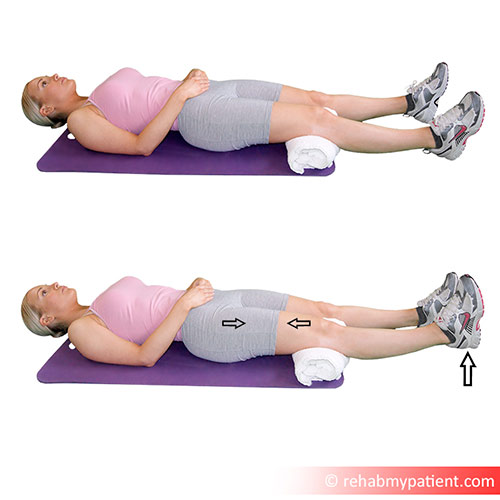
Treatments on hypertension, diabetes, cardiovascular diseases, and cancer have either been temporarily or completely interrupted amid the COVID-19 pandemic. According to the World Health Organization (WHO), it’s one of the unintentional results of tight infection control.
Rehabilitation services were also disrupted in many countries. The thing is, without rehabilitation, it will be less likely for a stroke survivor to restore his/her body’s natural functionality.
We don’t want COVID-19 to hinder a stroke survivor’s quality of life, as well. Hence, keep making a proactive approach to stroke recovery, even if quarantined. If you (or your loved one) is a stroke patient, here are some simple post-stroke care exercises you can safely do at home amid the pandemic.
Wrist Curls
A stroke patient will suffer from spasticity. It’s a condition in which their muscles tighten or stiffen due to disrupted connections between hand muscles and the brain. If you experience this in your arms, we advise you to do wrist curls.
Wrist curls are done similar to a bicep curl, only that it focuses on wrists. They’re done to improve the strength and range of motion of an affected forearm, as well as to restore normal fluid hand movement.
How to do it?
- Rest your affected forearm face up on your lap or on a table
- Hold any lightweight thing (e.g., a water bottle or unopened canned food) in your affected hand
- Bring up or flex your affected palm toward your shoulder then stretch down
- Repeat back and forth
If you can’t move your affected arm well yet, support it with your non-affected hand. Moreover, you can use your non-affected hand to apply a gentle stretch at your affected wrist’s end range of motion for about 90 seconds in any direction.

Weight Bearing Shoulder Lean
Like wrist curls, shoulder lean also improves the strength of a stroke survivor’s affected shoulders. More importantly, it prevents the risks of shoulder-related complications, like shoulder subluxation (i.e., a partial dislocation of a shoulder joint) or frozen shoulder (i.e., the stiffness and pain in your shoulder joint).
How to do it?
- Sit comfortably on the edge of a bed or bench
- Place your affected arm a foot away from your body
- Lean on your affected arm for ten seconds or so
- After 10 seconds, stretch out your other arm away from your body
- Shift your weight from one arm to another so that you can rock from side to side
If you feel good after leaning on your affected arm, that’s a good sign. You can put a rolled-up towel below your hands to increase your comfort. Conversely, if you don’t feel good or, worse, feel pain, stop the stretching right away.

Inner Range Quad Movement
Stroke survivors often suffer from weakening hips and core muscle groups, which prevent them from standing or walking properly. One way to restore the strength of these muscles is through bridging exercises. These movements move through a progression and usually starts with an inner range quad movement.
How to do it?
- Lay comfortably on a bed
- Place a rolled towel or a pillow under your knee
- Slowly lift your heel off the bed. Do this while gently pressing your knee straight down into the rolled towel or pillow.
Inner range quad movements don’t only strengthen your thigh muscles and restore your body coordination. It also alleviates tightness and stiffness in your soft tissues and joints, which are both caused by spasticity from a stroke.

Hip Flexion with Hold
Similar to inner range quad movement exercises, hip flexion also strengthens the hip and core and improves alternating coordination. It is suitable for gait training and an advisable leg exercise for stroke survivors with limited mobility because they can easily assist their affected leg with their own arms.
How to do it?
- Sit comfortably on a chair or on the edge of a bed
- Lift your affected knee or leg with your non-affected arm as high as you can, ideally up into your chest
- Hold it high for a count before gently lowering your knee down
- Switch to your other knee or leg and repeat the same steps
Make sure to keep your core tight, back straight, and your upper body still when lifting your knees or legs up. If your hands are also affected, always seek physical support from a family member or a physical therapist.
As you progress in your stroke recovery, you can make modifications to this workout. For example, instead of sitting, you can stand and hold onto a table or counter for support. You’ll know you’re way better when you can try doing hip flexion without any support.
Ankle Dorsiflexion
In addition to weak hip and core muscle groups, stroke survivors also suffer from weak lower muscles, which often results in a disability called “foot drop.” Foot drop (or drop foot) impairs a person’s ability to do dorsiflexion (i.e., raising the front part of your foot toward your shin). Dorsiflexion is critical when maintaining balance and walking properly.
For you to be able to regain mobility, start with the movement that you struggle with— that’s ankle dorsiflexion simulation training. This is the perfect starting point for every person with foot drop.
How to do it?
- Sit comfortably on a chair
- Have your affected leg crossed over your other non-affected leg
- Move your affected foot into dorsiflexion with the help of your non-affected arm
Your goal here is to reconnect your muscles back to your mind. Hence, it’s best to make deliberate movements so you can get the most from this activity. Doing so can trigger neuroplasticity or your brain’s ability to form and organize synaptic connections.
Takeaway
For a stroke survivor to keep up with its exercise and rehabilitation, motivation is deemed necessary. It doesn’t just come from within, but also from the people around a stroke survivor. There’s no one-size-fits-all motivation technique, so be sure to find out the right motivation for the survivor to get the best chance of enjoying a successful recovery.
Author’s bio:
Melissa Bell is a content writer and copywriter who specializes in fitness, lifestyle, and health. She's known for being a health junkie, and is crazy about yoga, tea, biology, and self-help books.
Sign UP
Sign up for your free trial now!
Get started with Rehab My Patient today and revolutionize your exercise prescription process for effective rehabilitation.
Start Your 14-Day Free Trial